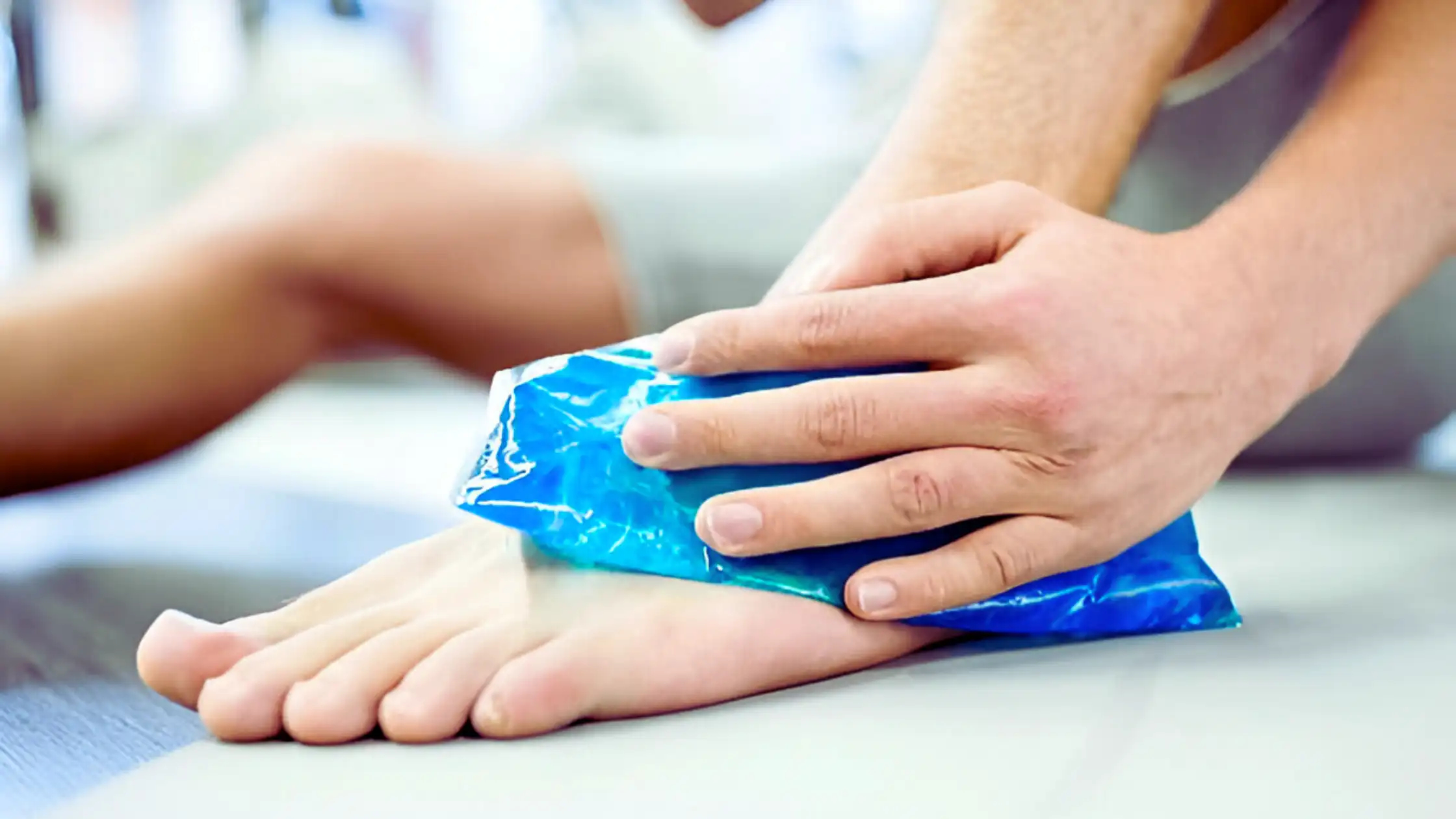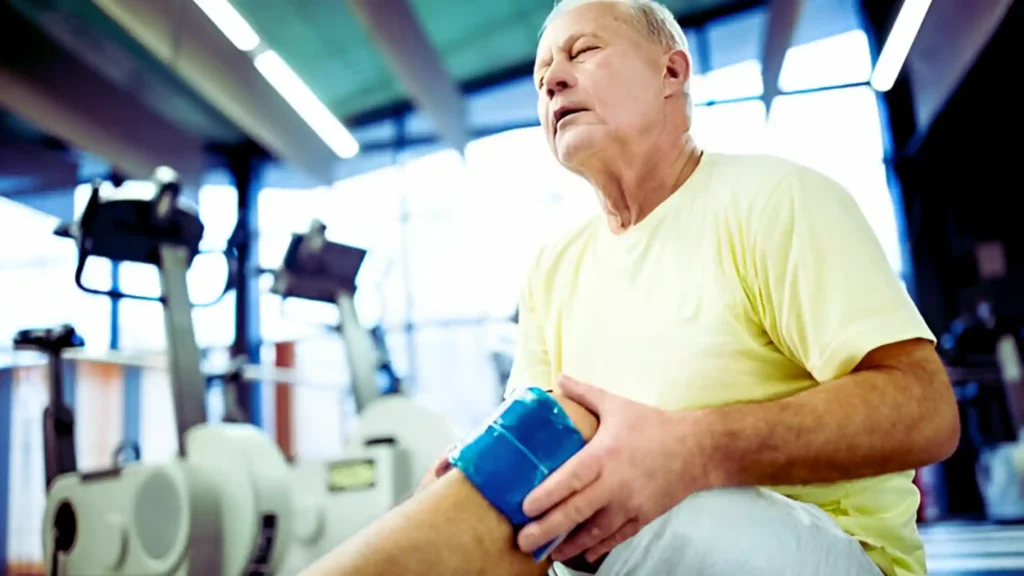Using a Cold Pack or an Ice Pack: Benefits, Best Practices & FAQs!
- August 19, 2025
- admin

One of the most popular methods of treatment applied to overcome pain and inflammation is cold therapy and cryotherapy. It entails the use of a cold pack or ice pack applied to the body, causing narrowing of the blood vessels, slowing down of blood flow and inhibiting swelling of the affected part. People often use cold packs to treat any injury, like sprains, strains, or bruises and to treat swelling after surgery or release muscle pains or even reduce fever.
In spite of the fact that cold therapy may be very effective in case it is used correctly, if not it may also lead to skin damage and frostbite or a longer healing period. To experience the best effects of the use and at the same time to avoid side effects, people should know how the use of cold packs must be implemented.
What Is a Cold Pack or Ice Pack?
A therapeutic device that involves application of cold to a certain area of the body is a cold pack or an ice pack applied to reduce inflammation, swelling and pain. They are a vital component of cold therapy (cryotherapy) and they can be in different forms according to the condition and necessity.
Types of Cold Packs or Ice Packs
Reusable Gel Cold Packs
Reusable Gel Cold Packs consist of soft solids full of gel, which remain cold over a long time. They can last in the freezer and can be reused many times; hence are convenient to use continuously at home or in clinical practice.
Instant Cold Packs
Instant cold packs are single-use chemicals in a pack containing chemicals that will instantly react when squeezed or shaken to give a non-refrigerated cold effect. They are a good solution to use in an emergency, travelling or sporting accident when a freezer is inconvenient.
DIY Home-Made Ice Packs
Home remedies include wrapping up ice cubes in a cloth, frozen peas, or simply filling a plastic bag with ice and with alcohol water mixture to obtain a slush-like substance. These are cost-effective and simple to prepare in the absence of a commercial cold pack.
Benefits of Using a Cold Pack or Ice Pack
Cold therapy can be helpful in a wide range of issues and also in accelerating the healing process, as it is easy to apply. The following are some of the major advantages associated with application of a cold pack or ice pack:
Reduces Inflammation and Swelling
The use of ice on a damaged part of the body causes blood vessels to narrow so that the amount of blood that circulates becomes less and the chances of swelling are reduced. This specifically is applicable in sprains, strains and acute injuries.
Numbs Pain from Injuries
Cold packs are a sort of natural anaesthetic as they numb the affected area. This will prevent the transmission of the pain or prevent the manifestation of pain signals and this will help in curbing the pain quickly.
Slows Nerve Activity
Cold therapy, which causes the slowing of nerve impulses, assists in the control of muscle spasms as well as cramps. This is best for disorders such as muscle tightness or nerve aggravation.
Helps Reduce Fever
Applications of cold on the body like the forehead, neck or armpits as a cold compress, are effective in reducing body temperature naturally; and it is more beneficial to children and adults with fevers.
Speeds Up Post-Workout Recovery
Quick recovery of body parts in muscle fatigue, inflammation are the reasons athletes and fitness enthusiasts use ice packs after a rigorous workout.

When Should You Use a Cold Pack or Ice Pack?
Cold packs only work well when applied at the right time and to appropriate conditions. The following are typical cases where cold therapy can offer relief:
Acute Injuries (First 24–48 Hours)
Cold packs suit acute injuries like falls, bumps, as well as injuries related to sports. The use of cold therapy in the initial 24 to 48 hours reduces the swelling and prevents additional damage to the tissues.
Sprains, Strains, and Bruises
Such injuries tend to result in swelling, tenderness and inflammation. The cold therapy permits a decrease in the blood flow in the region and this relieves pain and accelerates the healing process.
Headaches or Migraines
By using a cold pack on the forehead, the temples or the back of the neck, one can ease the distressed areas and weaken the severity of the headaches or migraines by numbing the area and shrinking blood vessels.
Post-Surgical Care
In case of some surgeries, on the advice of a medical expert cold packs are advised to be used, primarily in orthopaedic surgery or soft tissue surgery, so that the swelling is maintained at a desirable level and pain after surgery is handled.
After Dental Procedures
It is usually prescribed to use cold therapy following the removal of tooth cavities, fillings, or root canals, to decrease swelling on the face and anaesthetise the local pain.
You may also like to read: Stroke Rehabilitation: What to Expect as You Recover
Safety Tips and How to Use Ice Packs Correctly!
Although cold packs are very effective in controlling pain and inflammation, their improper use may harm the skin or give rise to the problem. Use the following tips to make it work effectively and safely:
Limit Each Session to 15–20 Minutes
The cold therapy should not be done for more than 15 or 20 minutes. Chronic exposure may result in irritation and numbness of the skin or frostbite.
Always Use a Barrier
Always use a cold pack or ice pack on top of or cover the skin. Cover it with a thin cloth, a towel or a pillow case to ensure that your skin will not suffer cold burns.
Avoid Overuse
Allow the skin time to rest once in a while. Wait at least 1 -2 hours and apply it to the same area. Excessive use can also harm the skin and the tissues under the surface.
Frequency of Use
During the initial 48 hours of an injury, a cold pack can be applied 3 to 4 times a day. Stop using a cold pack as the inflammation becomes less and less.
When to Not Use Cold Therapy?
Cold therapy may not be safe for everyone. Avoid using cold packs if:
- You have ineffective circulation (e.g., Raynaud’s disease)
- It has open wounds or skin infections
- You feel cold hypersensitivity or numbness
- It has been discouraged by a medical professional because of certain circumstances
DIY Ice Pack Options at Home
You do not necessarily require a store-bought cold pack to receive cold therapy. You can easily create adequate DIY ice packs with the help of some easy objects, which you can find in your kitchen or even in your bathroom. Some of them are inexpensive and simple:
Frozen Peas or Corn
Any package of frozen vegetables, such as a bag of frozen peas or corn, is a great homemade cold pack. The small cuts enable the pack to fit the contours of the body. It is ideal for joint and soft tissue injuries.
Crushed Ice in a Ziplock Bag
Stuff some crushed ice and some water inside a ziplock bag. Put the bag into an envelope and protect it with a thin towel to apply to the skin. It is easy and useful and can be used again.
Gel Packs Using Rubbing Alcohol and Water
One part rubbing alcohol and 2 parts water combined, then frozen in a ziplock bag. The alcohol does not allow the mixture to freeze solid but leaves it flexible and in a gel state, which moulds easily to the body.
Sponge Method
Immerse a sponge in water, put it in a closed plastic bag and freeze. When frozen, it can be reused as a compact cold pack that does not drip when it melts, which makes it excellent in case of kids or small spaces.
Proper Wrapping Techniques
The following are the necessary steps to wrap the body. First, lightly dust the sheets or coverings. Regardless of the DIY technique you take, you should always cover the freezing pack with a cloth or a thin towel and use it on your skin. This eliminates direct contact, which may result in frostbite or irritation.
Cold Pack vs. Heat Pack – When to Use Which?
Cold therapy and heat therapy can be used to address pain and to rapidly heal it, but they have different uses. The time on how to apply either a cold pack or a heat pack to the body can make a big difference.
Condition | Use Cold Pack | Use Heat Pack |
Acute Injuries (first 24–48 hrs) | Reduces swelling and inflammation | Not recommended during initial injury |
Swelling/Inflammation | Constricts blood vessels, reduces fluid buildup | Can worsen swelling |
Bruises, Sprains, Strains | Helps control bleeding and inflammation | May increase discomfort if applied too early |
Fever or Headache | Cooling effect, especially on forehead | Not suitable |
Chronic Muscle Pain or Stiffness | Cold may increase stiffness | Relaxes muscles and improves circulation |
Arthritis (Non-Inflammatory) | During flare-ups (inflammation) | Between flare-ups (stiffness relief) |
Points to Remember
What Can I Use Instead of an Ice Pack at Home?
In case you do not own a commercial ice pack, you can use a bag of frozen peas, a ziplock bag of crushed ice, a frozen sponge or a makeshift gel pack and water with rubbing alcohol. Only ensure that you wrap up any of these in cloth before you put them on your skin.
Are Cold Packs Good for Back Pain?
Yes, cold packs may be useful in back pain, particularly when the condition might have been caused by a recent strain or injury or inflammation. Use of cold will minimise swelling and numb the pain. Heat therapy can be more advantageous in case of persistent backache or rigidity.
Why Shouldn’t You Apply Ice Directly to Skin?
Skin contact with ice may harm or destroy the skin and related structures, causing frostbite or irritation or numbness. Be sure to put the ice or cold pack in a towel or cloth so as not to damage your skin as a continuous exercise.
Can Cold Packs Help with Headaches or Migraines?
Yes, cold packs can help in relieving headaches and migraine in some individuals. Application of cold pack over the neck or forehead region can cause a numbing effect leading to dullness in pain. Additionally it also help in relaxing tense muscles, that helps in reducing headache.
Ice packs and cold packs are basic but highly effective devices that can be used in pain and swelling management as well as in lesser injuries. Cold therapy is important in the recovery of sports sprains, post-surgery recovery and even in controlling fever, among others. Nevertheless, they should be properly used; that is, apply them for a limited period, applying a protective tissue, and not have direct contact with your skin to avoid such side effects as frostbite or skin irritation.
In cases of serious injuries, chronic pain, or when you are not sure of the time and method of undertaking cold therapy, it is wise to seek the services of a healthcare professional. The ideal results on this simple at-home cure should be achieved through safe and informed use
Additional FAQs
1. How long should I apply an ice pack?
You are advised to use ice packs of 15 to 20 minutes duration. It is better not to stay longer to avoid damaging or frostbite of the skin. A cloth barrier should always separate the pack and the skin.
2. Can you use a cold pack for a fever?
Yes, cold packs can also be used in curbing fever, particularly by putting them on the forehead, neck or armpits. This technique is well adopted both in children and adults as a natural method of body cooling.
3. Is it safe to use ice packs every day?
Yes, when used in the right way and with the correct intentions. Muscle recovery from acute pain using a cold pack is normally safe when used every day, yet ensure you do not overdo every session, and your skin should be able to have ample rest before another application.
4. What is the difference between cold therapy and heat therapy?
Heating therapy is utilised when healing chronic pain, muscle stiffness or tension, whereas cold therapy is better suited to an acute injury, swelling, and inflammation. The suitability of a given method is determined based on the condition that you have.
5. Can ice packs help reduce swelling?
Absolutely. When applied immediately after an injury, ice packs cause a flood of vessels and slow down blood circulation to the area hence minimising swelling.



